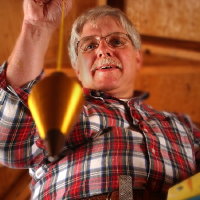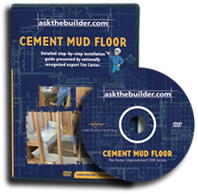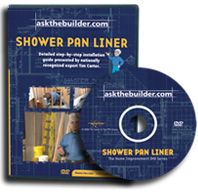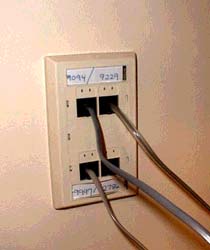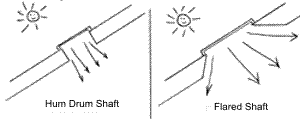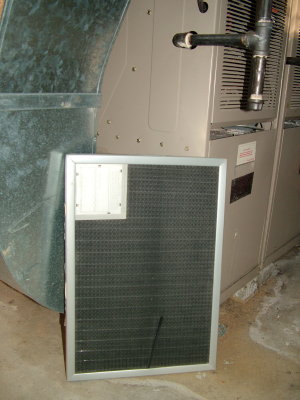DEAR TIM: The forecast of stratospheric heating bills for this winter has me numb. I wonder if it makes good sense to install new replacement windows and doors to save energy on my natural gas heating bills. Some companies have tempting ads that say I will save lots of money. Is it true? How do you make a sound decision on when you upgrade windows and doors? Are there easier ways to save money on heating bills? Linda, B., New Haven, CT
DEAR LINDA: You and thousands of other people are facing this decision if the recent statistics from the American Gas Association are accurate. They say natural gas prices will rise 41 percent, propane will jump 21 percent and heating oil will go up 27 percent for the 2005-2006 heating season.

Get out a calculator and study your past utility bills. Once you see what you are really paying for fuel to heat your home, you can begin to calculate payback periods on energy-savings upgrades to your home. PHOTO CREDIT: Tim Carter
You should save money on your heating bills with new windows and doors, but the question is how much will you save and when will you at least break even? Remember, you never save one penny until such time as you have recaptured the money you spent to derive the energy savings.
To make sound financial decisions when spending money on energy-savings upgrades, you need to know what you have spent for fuel in the past. If you keep your utility bills, you can do this very quickly. If you throw them away, my guess is your local utility company can provide you with past records.
Look at one year's worth of utility bills. If you get your natural gas from the same company that supplies your electricity, the two components are usually split on the bill. Add up your total natural gas cost for the entire year. Since you don't have a separate gas meter that is connected to your furnace, we are going to have to extrapolate what you are probably spending on natural gas to heat your home.
It is my guess your furnace does not operate for 6 months out of the year. If you are like many people, your furnace is probably off from the middle of April until the middle of October. Look at your May, June, July, August and September bills. Add up the natural gas cost for these months and divide it by five. This is the average monthly cost for natural gas to operate everything else in your house such as a stove, clothes dryer, water heater, outdoor gas grill, etc.
Multiply this monthly natural gas cost by 12 and then subtract that sum from the total annual gas bill. The remainder is a fairly accurate cost of what you spent last year to heat your home. I ran this calculation with a neighbor's bills and discovered she spent about $1,435.00 last year to heat her home. That number is significantly above the national average last year of $742.00 to heat with natural gas. The US Energy Information Administration projects the national average natural-gas heating cost this winter to be $1,048.
Installing new windows and doors is going to cut down on air infiltration and direct radiant heat loss. But even with the best windows on the market, I doubt you could really save more than 30% of your total heating cost. Remember, you will still have heat loss through your walls and attic and all other places that are leaking air.
Using my neighbor's past bills, she would save $430.00 in the upcoming year if gas costs remain level and we have an identical winter as last year. But if your heating cost is closer to the projected national average, you would only save about $314.00.
Let's assume my neighbor is considering new windows and doors as are you and that the estimate to install them is $9,500.00. Without factoring in inflation, the rise in energy costs or the amount of interest she could get if she left the $9,500 in the bank, it would take over 22 years just to break even. Once she gets past the break even point, she would finally start to reap the real financial energy savings.
You can save money on your heating bills this winter without spending money. Turn your thermostat down right now to 64 F. Then go up to your bedroom and put on some long underwear, an extra pair of socks, a long sleeve tee shirt, a sweater and/or a hooded sweatshirt. At night, sleep in flannel pajamas and throw one or two extra blankets on the bed. This may seem extreme, but think back to what our forefathers and mothers did when they lived and slept in drafty log cabins in the wilderness. If they survived bitter, cold winters, surely you can.
It is important to differentiate between energy savings and saving real money. Most energy-savings home improvements will produce instant energy savings once the improvement is completed and installed. You will spend less to heat your home. But you personally will not see the real financial savings for some length of time since you had to spend extra money to be able to produce the energy savings.
Programmable thermostats will save money if you program them accurately and really let the thermostat set back the house temperature when you are away and sleeping. You can buy a great one for just about $100.00.
Column 598
